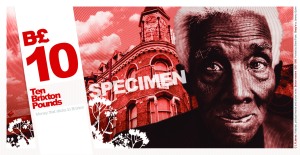In September 2009, the Brixton Pound was launched with all the accompanying fanfare from the national media. What has happened since then, now the B£ is no longer so much under the spotlight?
As a community presence, the B£ Group seem to be flourishing. They have stalls at every major Brixton event, Transition Town Brixton have a community shop in the Granville Arcade and new businesses are being added all the time. The notes can now be accepted in over 160 businesses, more than double the number in September. Recent additions include BX Merchandise in the Bon Marche centre and several of the ‘Brixton Village’ shops.
Jenni Hulse, press officer for the B£, said “Now it’s all calmed down a bit, we can focus on communicating with local businesses. The main challenge is encouraging people to offer the B£ back in change – not just accept it – to create a more circular view.”
One major difficulty for the Brixton scheme as an urban currency has been that local market traders often do not use suppliers from London, let alone from Brixton, which means that very few could sign up to the Pound in the first place.
That’s still a problem and the B£ Group has just received funding to map out the supply chains in Brixton to help put businesses in touch with each other, source their produce in the area and provide mutual support. Two paid researchers will be employed from September to do this research. In the meantime, there are thoughts to launch an ‘adopt a shop’ initiative to encourage residents to build up a stronger relationship with their local businesses.
It’s too early for there to have been an extensive survey of the B£’s effect on the local economy, but it seems unlikely – let’s be honest here – that the B£ will ever have a significant impact on local carbon output. For me, however, that doesn’t take away from the fact that it is a community initiative that celebrates Brixton – and that can be no bad thing.








